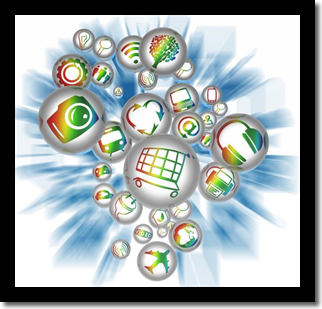Internet of Things 101
The Internet of things (also known as IoT) is all about connecting devices that include various sensors to the Internet. I'm talking about heart rate monitors, for example, which can gather data and send it to your mobile phone, for example. Or about your fridge, which can send you an email whenever you run out of milk.
In a nutshell, IoT is an extra layer of data exchanges that uses the Internet to improve our lives by sensing, analyzing and transporting information from one device to another using various Internet protocols.
Today, there are probably tens of thousands of different IoT devices that serve many different purposes. And since the IoT technologies are still in their infancy, I can't wait to see what the future will bring!
Of course, this industry segment isn't without its challenges. Improved data security is crucial, for example, and some IoT devices may have been launched too early, causing critical data leaks, and sometimes leading to serious problems.
Cisco estimates that we will have about 20 billion devices in the IoT space by 2020, and up to 50 billion devices by 2030. And this is just a conservative estimation! Other companies state that we will have about 150 billion IoT-based devices by 2030!
Industry specialists have recently coined a new term - the Industrial Internet of Things, a.k.a. IIoT. These devices will be able to connect to various technologies using advanced sensors and software applications, with the goal of increasing business productivity.
Think about devices that will evaluate the traffic in a city, depending on the number of cars in a certain area, and then adjust the duration of the traffic lights accordingly. Or think at a centralized system that monitors the health of all the patients in a hospital and prioritizes medical resources. Due to IIoT, things that looked like Sci-Fi only a decade ago are now entirely possible.
But what about us, regular people? How can we benefit from having access to these IoT technologies? If you are reading this article, chances are you're already using an IoT piece. Think about wearable devices - smart watches, for example. Smart TVs, connected cars and VR headsets are just a few of the most popular examples.
As you can see, people tend to focus on the entertainment value of the various IoT technologies. But others use IoT for serious purposes, benefitting from the advantages that are offered by wearable health tracking devices, for example. Other exciting ideas in the healthcare sector include smart pills and remote patient monitoring.
I have already told you that data security is a serious challenge in the IoT sector. Villains already used IoT devices to launch large scale DDoS attacks, and since the number of IoT devices is constantly growing, so will the number and strength of these attacks.
Several security aspects apply particularly to IoT devices. Some of them can't be patched, because their manufacturers didn't think about it. Others were made by companies that only wanted the clients' money, providing poor customer service. Most IoT devices don't provide detailed, easy to understand manuals and tutorials. And the list could go on.
This doesn't mean that we should dump IoT, though. But for now, be wise and don't put your trust in IoT devices. Don't secure the doors in your house using IoT-based locks, for example. It's time to use IoT devices for their initial purpose - entertainment. This way, if something goes wrong, you won't have too much to lose.


